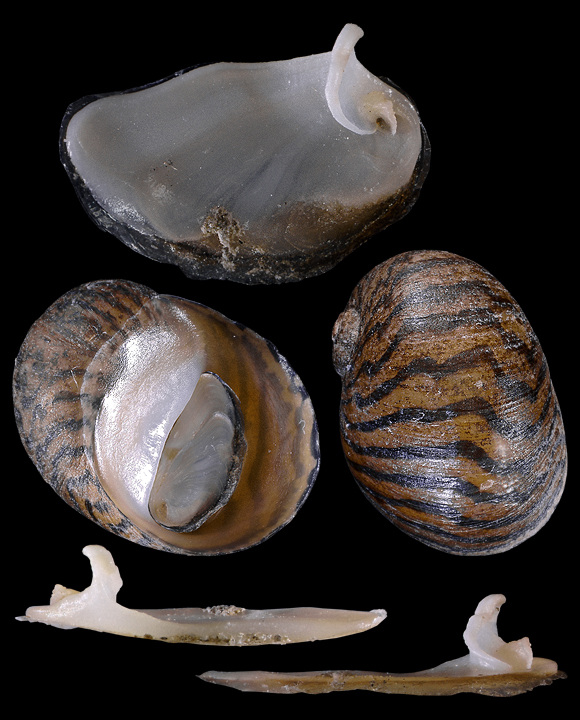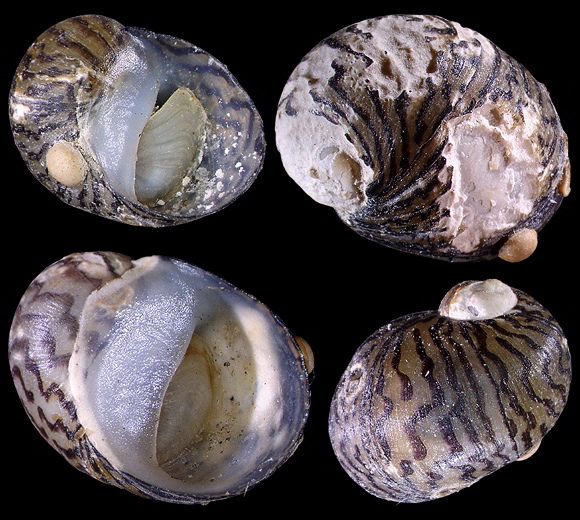
Donau and its northern tributaries from the upper part, its southern tributaries in the former Yugoslavia (Sava river), east to the delta in the Black Sea; also in Dalmatia, along the Cetina river, where it is found together with Th. fluviatilis; also present in N. Italy (northern half of the Po drainage basin – rivers in the Friuli-Venezia Giulia: Piave, Tagliamento, lower Isonzo). Micrograzer. On and under stones in streams, rivers and lakes. Original taxon: Nerita danubialis.
Notice the faded colour of the operculum. Donau river bank, Visegrád, Szentendrei járás, N. Hungary. 7-8,3mm.
Notice the faded colour of the operculum. Donau river bank, Visegrád, Szentendrei járás, N. Hungary. 7-8,3mm.
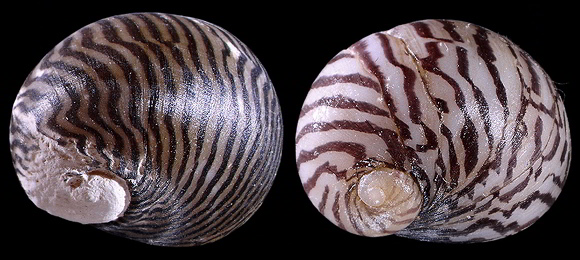
« The Donau-Schwimmschnecke: shell ovate-elliptic, arched above, flat below, strong, smooth, somewhat shiny, and adorned with black or dark brown acute-angled tortuous lines, sometimes uniting. The spire has 2-3 whorls: the last one very large, bulbous, the others very small and scarcely protruding as a blunt tip. The aperture is crescent-shaped, white, its outer margin sharp, its columellar margin smooth, advanced towards the mouth and narrowing. » – C. Pfeiffer: Naturgeschichte deutscher Land- und Süsswasser- Mollusken vol. III, Weimar 1828, p.48.
Pattern variation in specimens from the lower Donau area, in Tulcea Judeţ, E. Romania. Left: Dunărea river bank, Tulcea. 9,5mm. Right: Lacul Babadag, south of Tulcea. 9,2mm.
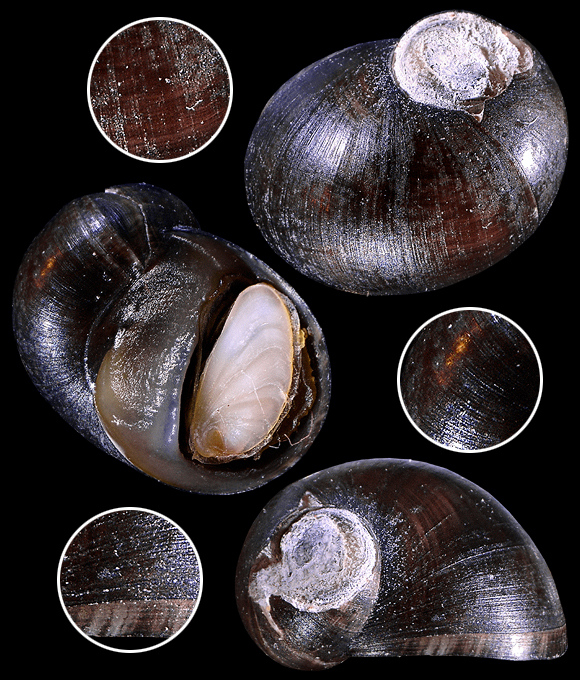
V. Gashtarov legit (BG). Благодаря Виктор!
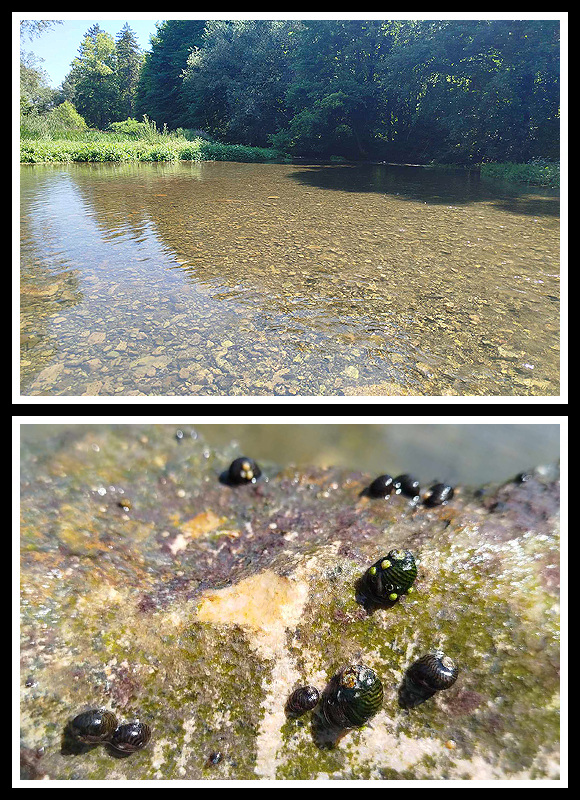
– (CC BY-NC-SA) –
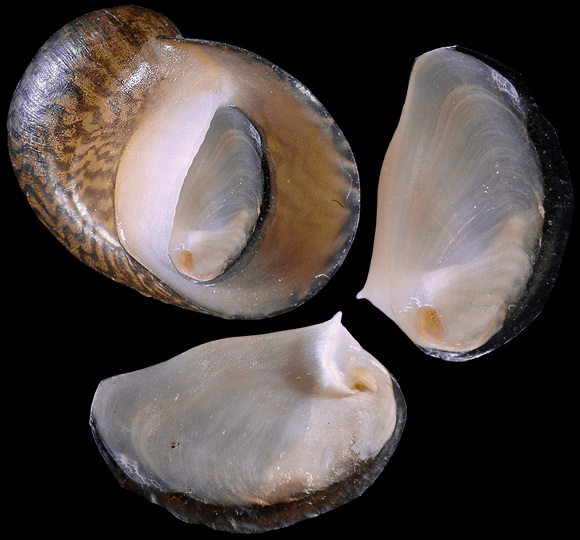
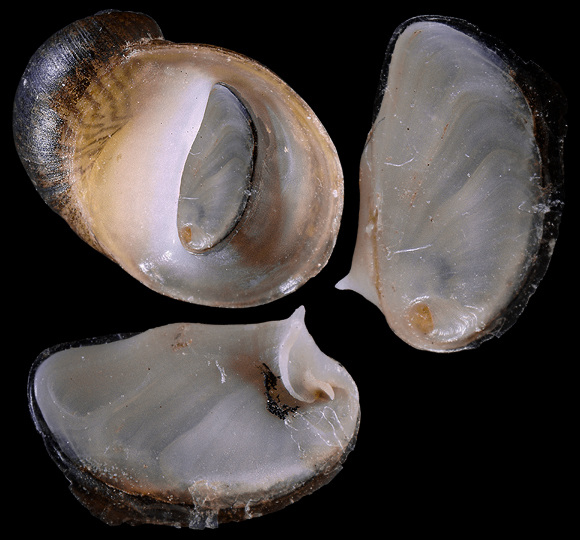
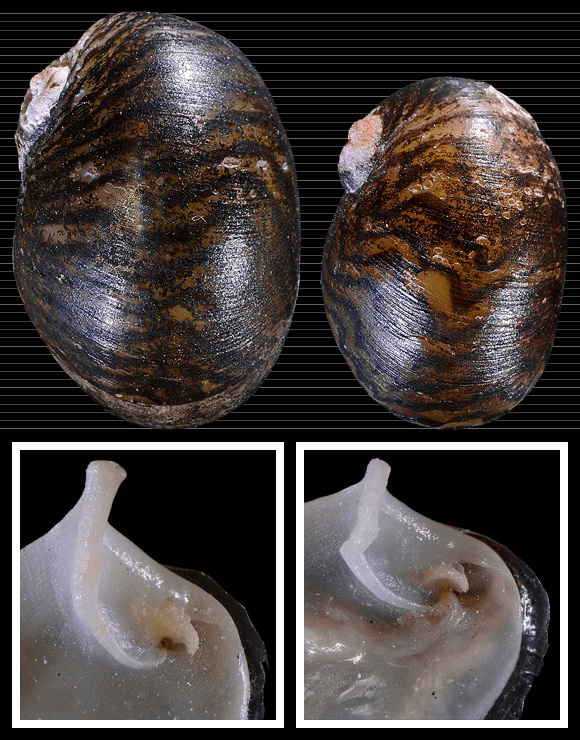
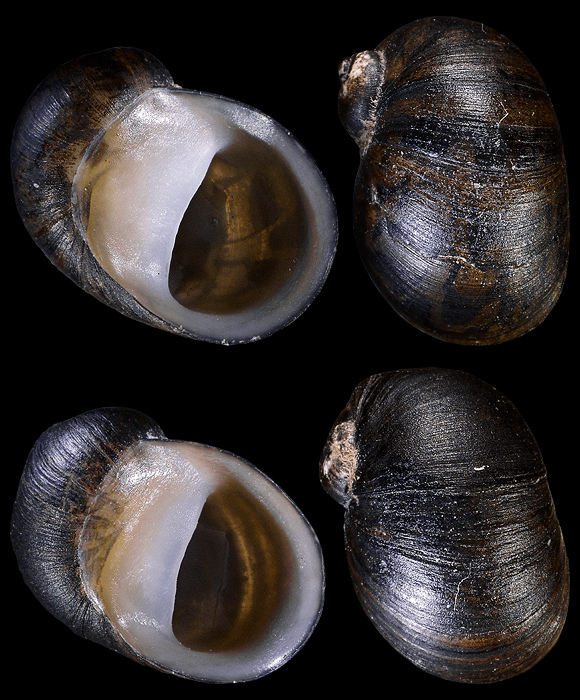

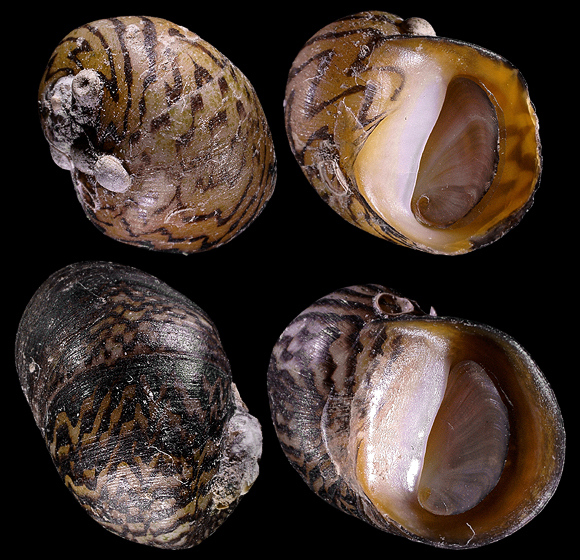
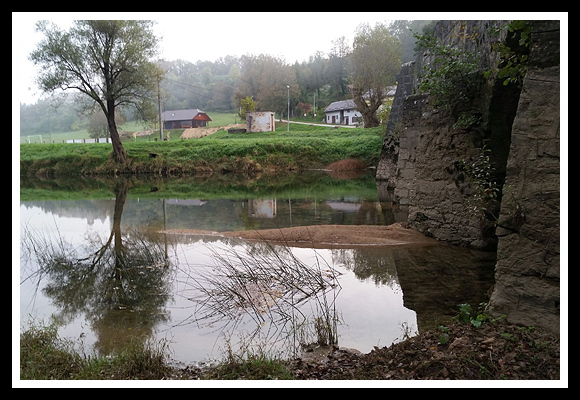
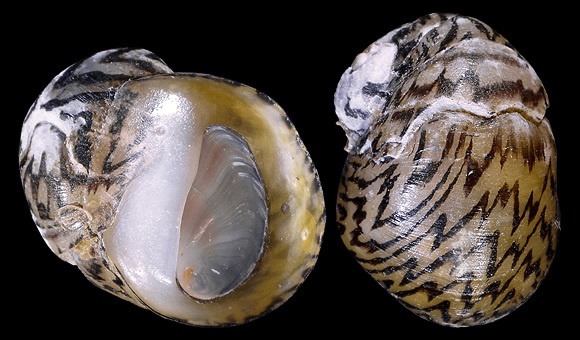
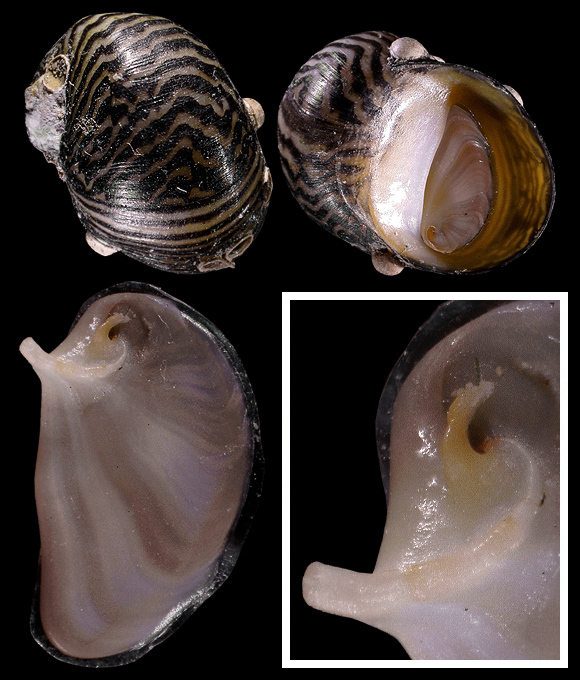
Notice the hooked pseudoapophysis.
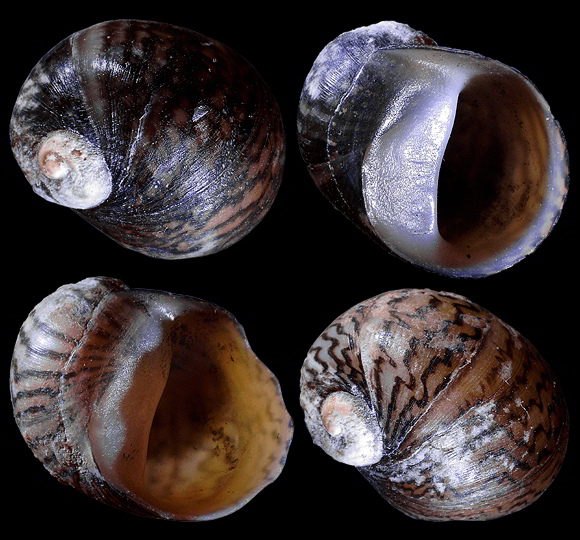
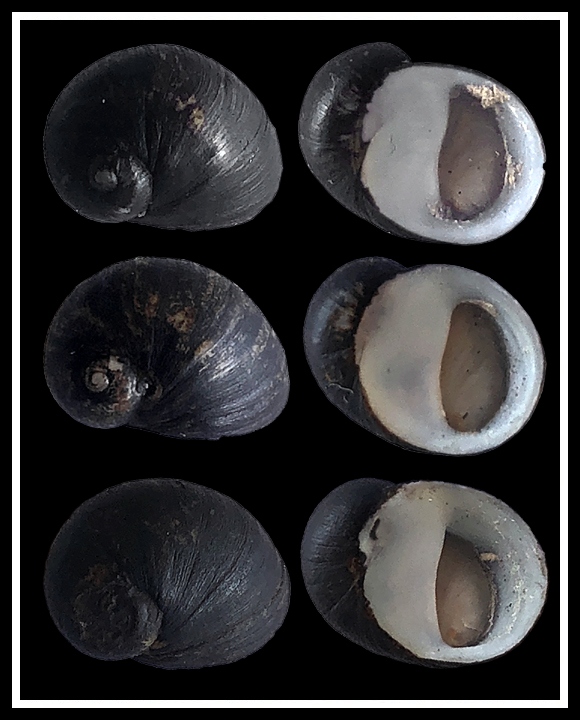
A densely patterned population, almost all black, has been found in the Lajta river, north of Fertõ Lake, Gyõr-Moson-Sopron Comitat, NW. Hungary. 7,4-8,5mm. These specimens do not seem to belong to prevostianus but, as it can be extrapolated from the relationship between prevostianus and danubialis, it is not unwise to imagine the existence of intergrades in the morphology. Original pictures provided by S. Pavlidis (GR) – (CC BY-NC-SA).
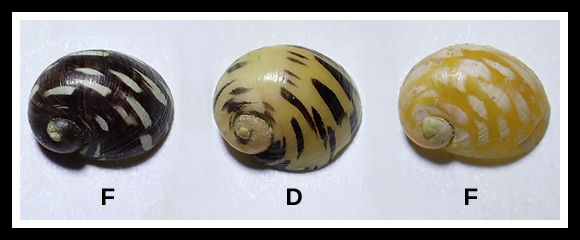
in danubialis, the blotches are darker than the background (specimen D) while they are paler in fluviatilis (specimens F). In addition, danubialis is more globose. Original image provided by R. Crnković (HR) – (CC BY-NC-SA).
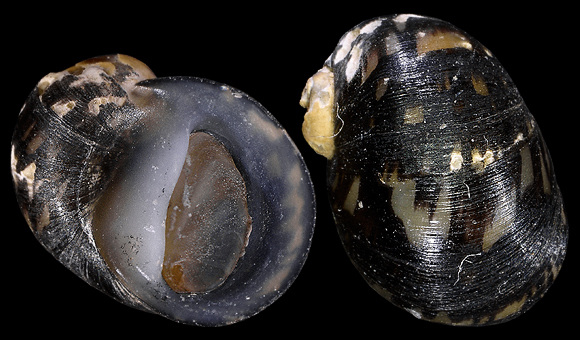
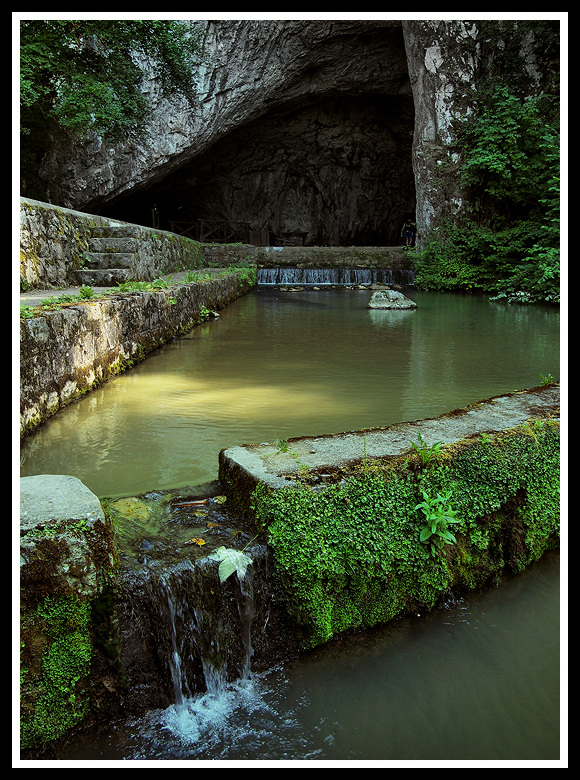
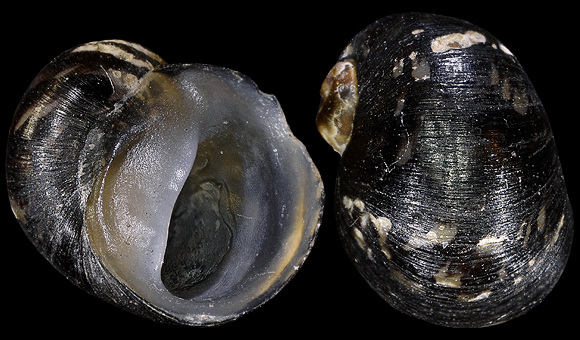
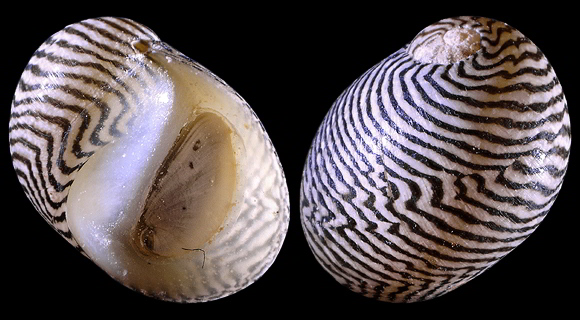
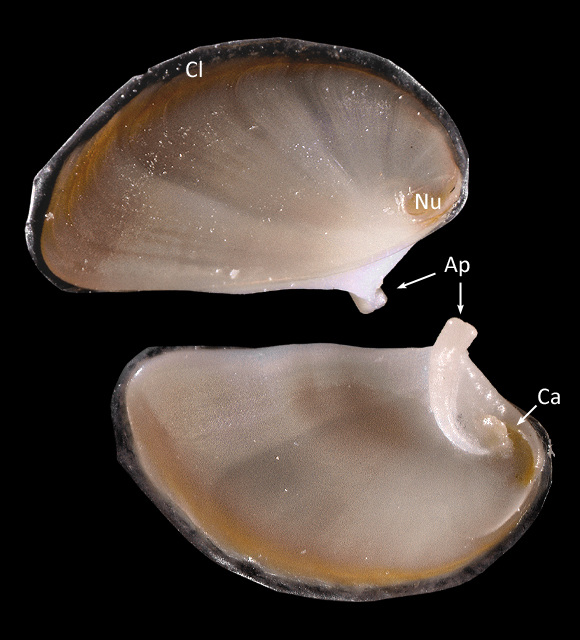
The operculum of danubialis is not very coloured. The marginal conchiolin layer (Cl) is orange, as well as the nucleus (Nu) where it originates, while the apophysis (Ap), tapering at its base, is of a pale grey. The anterior marginal part of the callus (Ca), which borders the operculum on the columellar side, shows some traces of orange.
Cetina river, near Split, S. Croatia.
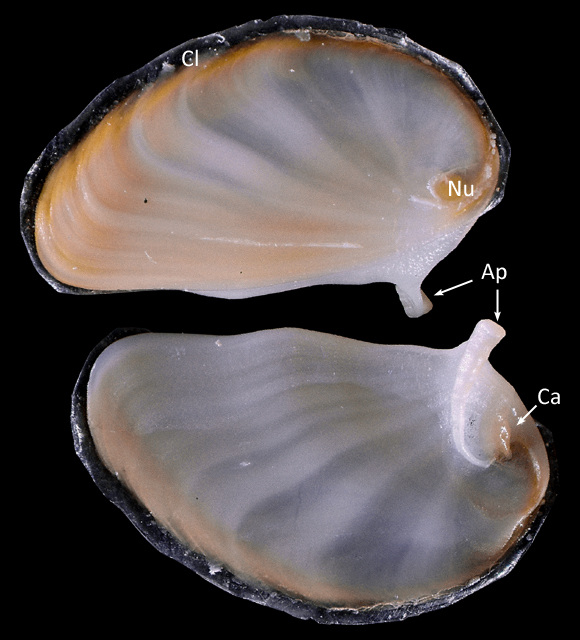
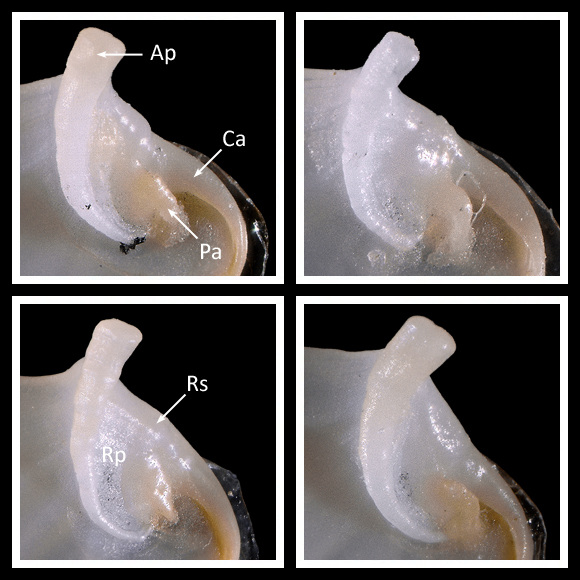
The apophysis itself (Ap) is like a claw stuck in the operculum. The more or less hooked pseudoapophysis (Pa), on the ridge at the end of the anterior abutment, varies from a simple spike to some tumid excrescence; however, it remains less spectacular than in meridionalis. A more or less conspicuous “Rib Shield” (Rs), so named by Sands & al. in their article of 2010, borders the membrane of the apophysis on its outer edge. The marginal callus (Ca) is in the direct extension of this shield; it develops along the anterior margin of the operculum.
